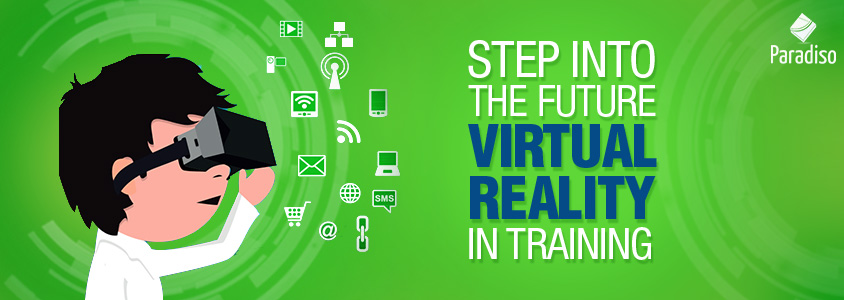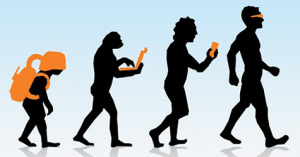
We have
something for you!
Are you still figuring out which LMS is the best? Grab the chance to explore the LMS Buyer's Guide and get started.

Are you still figuring out which LMS is the best? Grab the chance to explore the LMS Buyer's Guide and get started.

In a world where technology is steadily revolutionizing the corporate world, it comes a no surprise that Virtual Reality, or VR, is often touted as the “next Big Thing”, particularly in the field of corporate training and online learning.
But before we get into why Virtual Reality in Training is considered a bigwig in the L&D sector, let us understand what exactly VR is and Why it is taking the world by storm.
They say practice makes perfect.
It’s true, there is no denying that hands on training is much more effective than regular theoretical training. This holds true in almost every aspect of our lives.
But what do we do when some practical aspects of the training are too risky, dangerous, or just too complicated for first time attempts? What about situations in which there is little or no margin for error?
Let’s consider an example. A newly graduated medical student, at the beginning of his career as a surgeon. The only way he can really hone his surgical skills is by putting his theoretical knowledge to practical use, i.e by actually performing surgical procedures.
However, you can’t just hand him a person to “practice” on, praying that he doesn’t make a mistake right? The results of that “practice” could be catastrophic.
If only there was a solution to give our young doctor the hands on practice he needs, minus all the risks associated with the process!
Well, there is, and it is called Virtual Reality (VR).
With Virtual Reality, he can be placed in a simulated environment that is designed to mimic the actual operation room and everything in it, where he will get to practice his surgical procedures in peace, without having to worry about any repercussions.
 s this VR and what’s with all the buzz around it?
s this VR and what’s with all the buzz around it?
According to WhatIs.com, Virtual Reality is “an artificial environment that is created with software and presented to the user in such a way that the user suspends belief and accepts it as a real environment”.
In simple words, virtual reality is when a person is immersed in a computer generated, simulated environment, that he can explore or interact with.
The experience is generally made more realistic through the stimulation of the user’s senses including vision, hearing, touch, etc.
A brief history of VR:
Though the concept of VR gained traction is the 80s and 90s, there were elements of virtual reality as far back as 1860s.
The modern concept of virtual reality was first referenced in 1935 by science fiction writer Stanley G. Weinbaum in his short story Pygmalion’s Glasses, years before the term was even coined.
Check out the Timeline below to have a look at the important milestones in VR development:
Virtual Reality has indeed come a long way since it’s inception, and one of the main areas in which it is steadily making its mark is corporate training and online education.
Virtual Reality in Training is the up and coming concept that is revolutionizing L&D processes in a plethora of industries, right from the field of medicine to education to tourism.
The primary reason why more and more organizations are choosing to use VR in training for their employees is that the immersive nature of virtual reality enables the employees to get a more hands on and practical training experience without having to worry about any risks or fear of making mistakes.
Virtual Reality in training is able to help employees get better acclimated to the working environment of the organization by giving them an actual feel of the tasks and responsibilities they may have to take up.

The major benefit of Virtual Reality in training is that it simulates risky or dangerous situations in a controlled environment, thus removing the risk factor associated with such tasks.
This not only allows the learner to get a more hands on training experience of risky situations but also helps alleviate his fear of making mistakes.
It’s true that people retain better what they can see or experience rather than simply what they are made to read.
VR in training makes use of this and creates a more visual learning experience for the learner, improving his understanding and retention capacity.
Why read when you can experience, right?
As with visual approach, when learners are able to actually experience difficult or complex situations themselves they are better able to grasp the handling of those situations.
Virtual Reality in training is able to simplify the complex nature of certain situations by allowing the learner to experience it himself rather than just trying to learn about it from written data.
VR for training is especially interesting to use as it can recreate real world experiences and allows the learner to immerse himself in the situation.
For example, if your training program involves a real case that the organization has faced in the past, the new employee will have a much better grasp of how to handle the situation by using virtual reality training, where he will get to see for himself what the situation was and how it has to be handled.
Since Virtual Reality in training creates a simulated environment and does not require a dedicated classroom, it can be conducted remotely, saving both time and money that would otherwise have to be spent on planning and developing a complete training program for the learners.
Humans are inherently attracted to things that are innovative and “fun”.
VR for training, being a fairly new concept in training, and with it’s promise of an immersive and enjoyable learning experience, is especially attractive to the learners and thus helps in creating more learner engagement motivation.
These benefits are just the tip of the iceberg when it comes to how Virtual Reality in training can help your organization. VR for training is slowly but surely changing the face of learning and development as we know it.
Despite facing a few challenges, as every new technology has, Virtual Reality in training is breaking L&D barriers each passing day, and with more and more VR systems coming up like Oculus Rift, Google Daydream or the newly arrived Sony Playstation VR, the future of virtual reality in training is certainly looking quite bright.